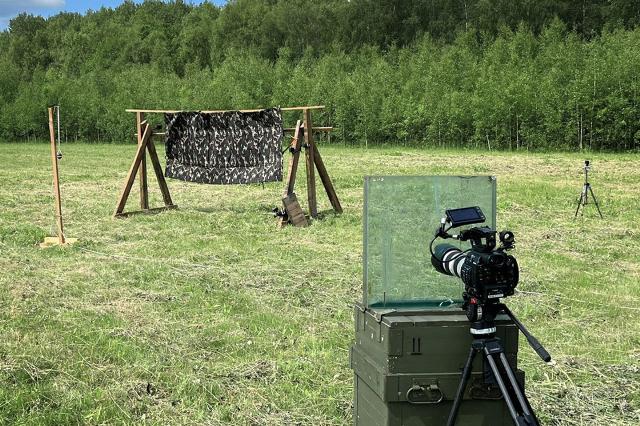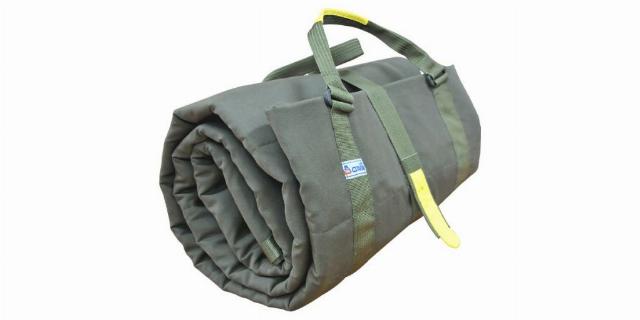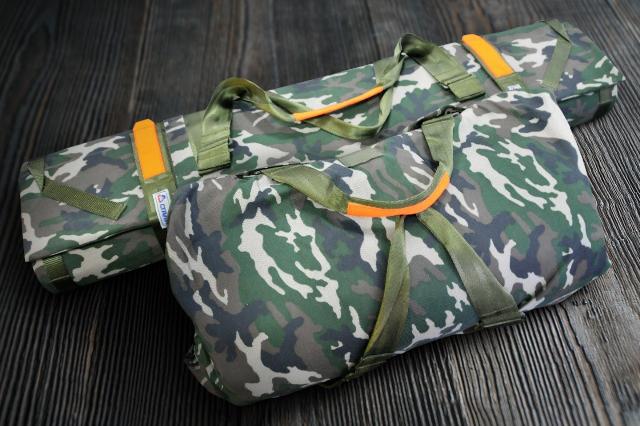Shrapnel damage is the second most common damaging factor according to the statistics of modern warfare. And if fighters, as a rule, have a variety of personal protective equipment, then anti-splinter blankets can be used for the safety of civilians and important facilities. They are designed to absorb fragments and weaken the shock wave generated by the explosion.
The production of such blankets began last year at the Kalashnikov Steel Research Institute. Recently, the Aegis blanket has been modified to protect against detection by night vision devices and thermal imaging sights.
Under a heavy-duty blanket
Protection from shrapnel in explosions is critically important for the preservation of human life and health in conflict zones or when working with explosive materials. One of the most effective methods of protection is the use of special structures and shelters. In addition, personal protective equipment plays an important role in protecting against shrapnel: bulletproof vests, helmets, armored suits, etc. They absorb the energy of the explosion and prevent fragments from entering the body.

However, if the danger is real, and there are no shelters nearby, as there is no possibility to use a bulletproof vest, then an anti-splinter blanket can help to escape from injury by shrapnel and secondary damaging factors of the explosion.
It is a specialized protective device designed to minimize the risk of injury from shrapnel in explosions. It is used in various situations related to mine clearance, explosive ordnance disposal, as well as in cases of threat of terrorist acts.
What are anti-splinter blankets made of?
A shatterproof blanket usually consists of several layers of high-strength materials such as ballistic nylon, ultrahigh molecular weight polyethylene, aramid fabrics, for example Kevlar. These materials are highly resistant to tears and punctures, which makes it possible to effectively absorb and dissipate the energy of the explosion and retain fragments. The size and shape of the blankets may vary depending on the specific tasks and threat level.
Anti-splinter blankets are used in situations where there is a risk of explosion and shrapnel formation. For example, such blankets can be used by sappers and mine clearance specialists when working with suspicious objects and explosive devices. The blanket is placed on top of a dangerous object in order to minimize the spread of fragments and their impact on people and equipment in the event of an explosion. In addition, the blanket can protect critical infrastructure objects (transformers, network equipment, communication equipment, etc.) from damage by shrapnel.

Also, anti-shatter blankets can be used in high-risk areas, for example at checkpoints, airports and train stations, where there is a risk of terrorist attacks. They can be used to quickly hide suspicious items before the arrival of specialists. In the military sphere, blankets are used to protect personnel and equipment from shrapnel and explosions during combat operations.
Innovations from the Research Institute of Steel
The Kalashnikov Concern's Research Institute of Steel knows about protective equipment firsthand. For more than 80 years, materials and structures have been developed here to protect weapons, equipment and people. In addition to armor for almost all types of Soviet and Russian armored vehicles, the Institute has developed such unique products as the protection of V.I. Lenin's sarcophagus, protection for the liquidators of the Chernobyl disaster, the Central Bank vault, etc.
In 2023, the Research Institute of Steel launched the Aegis shatterproof blanket into mass production. It is a multilayer package of a soft protective structure based on high-strength ballistic aramid fabric and UHMWPE (ultrahigh molecular weight high-density polyethylene). The package is placed in a case made of durable, wear-resistant material.
The dimensions of the blanket – 1x2 m – allow it to be used for personal protection, as well as to cover objects, equipment, window and door openings with it. The blanket is compactly folded, convenient to transport and can be quickly opened for use. Weight – from 8.4 to 10 kg.
If we talk about modifications of the blanket, then at the moment there are two of them at the Research Institute – "Aegis-U" is heavier than a simple "Aegis", but it is characterized by greater shatter resistance. The anti-shatter resistance of the protection is estimated by the so-called ballistic limit. This is the speed of a standard shard, at which the protection breaks through or does not break through with a 50% probability. In Russia, a steel ball with a diameter of 6.3 mm and a weight of 1.05 g has been adopted as a standard fragment. The shatterproof resistance of the Aegis blanket according to this parameter is 450 m/s, and the Aegis-U is 550 m/s.
However, when grenades, mines and other fragmentation munitions explode, the range of fragments, firstly, differs greatly in both speed and mass, and secondly, fragments tend to have sharp edges that easily cut ballistic tissues. How the Aegis blanket proved itself during tests with real grenades, you can watch the video:
In the spring of this year, the Research Institute of Steel finalized its product. In particular, the camouflage properties of the blanket have been improved, and now the equipment under the "Aegis" is not visible through night vision devices and thermal imaging sights. The high radio transparency of the blanket has also been confirmed, so that it can be used to protect radar nodes.
Anti-splinter blankets are an important means of protection that can significantly reduce the risk of injury and damage in various dangerous situations, as well as protect equipment from being hit by shrapnel. The effectiveness of such blankets is due to the use of modern high-strength materials and thoughtful design, which makes them important elements in the work of security specialists, rescuers and the military.

